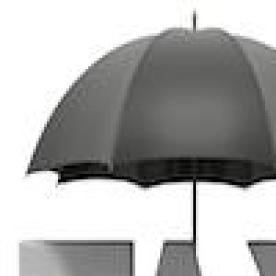Taxes are one of the largest ongoing expenses for a commercial landlord. As such, landlords will, whenever feasible, seek to pass along responsibility for those taxes to their tenants. In a typical retail lease, the tenant will be required to pay a percentage of the total property related taxes equal to the ratio of the tenant's leased square footage to the total leased square footage of the building. However, if the building is not fully leased, a tenant might find itself paying an unexpectedly large share of the building's overall taxes. This could be catastrophic for a tenant if the building's vacancy rate grows.
So, what's a tenant to do? At a minimum, make sure a "tax floor" is included in the lease.
What is a tax floor and what does it do? Essentially, a tax floor sets a minimum percentage of overall building occupancy that will be used to determine whether the tenant will pay taxes based on the ratio of the tenant's leased space to either the total leased square footage or the total leaseable square footage of the building. Another type of tax floor a tenant could negotiate is a floor under which the total leased space (used when calculating a tenant's share of the taxes) does not fall.
The operation of a tax floor is best demonstrated by an example:
Assume a lease requires the tenant to pay a proportionate share of the taxes (which may include real and personal property taxes, taxes based on the landlord's gross receipts related to the building, public and governmental charges and assessments, and other taxes that landlord may be obligated to pay with respect to the development or ownership of the building) that is equal to the ratio of tenant's leased space to the total leased space in the building. However, the lease contains a tax floor of 80%, which provides that if the ratio of the total leased square footage to the total leaseable square footage is less than 80%, then tenant's proportionate share of the taxes would instead be equal to the percentage of tenant's leased space to the total leaseable space in the building.
So, if:
-
Annual taxes for the building are $100,000,
-
Tenant's leased space is 1,000 square feet,
-
Total leased space in the building is 40,000 square feet, and
-
Total leaseable space in the building is 45,000 square feet,
then, tenant's share of the taxes would be $2,500 ($100,000 x (1,000/40,000)) since the percentage of leased space to leaseable space is greater than the 80% tax floor (40,000/45,000 = 89%).
However, if we instead assume the total leased square footage in the building is 25,000 square feet and everything else remains the same, the total leasedspace would now be only 62.5% of the total leaseable space – less than the 80% tax floor. Therefore, tenant's share of the taxes would be $2,222.22 ($100,000 x (1,000/45,000)). Without the tax floor, the tenant would pay taxes of $4,000 ($100,000 x (1,000/25,000)). So the inclusion of the tax floor saved the tenant almost $1,800.
Some landlords will not agree to the kind of tax floor used in this example, but will agree to a tax floor that sets the leasable space used in calculating a tenant's share of the taxes at a negotiated percentage. If it is 80%, then the leasable space (using all the figures from the other example) is 36,000 square feet (80% of 45,000). Therefore, the tenant's share of taxes would be $2,777.78 ($100,000 x (1,000/36,000)).
A tax floor will give the tenant some assurance that it will not be responsible for an excessively large portion of the overall taxes if the building has vacancies. Additionally, a tax floor acts as further encouragement for the landlords to fill those vacancies as quickly as possible. Finally, a tax floor allows the tenant to better predict and plan for its potential tax liability and the costs of its tenancy.





 i
i

